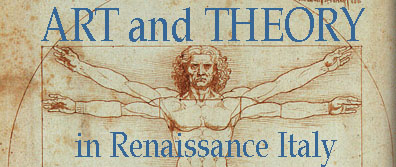And so in the days of Emperor Constantine and Pope Silvester the Christian faith gained the upper hand.
Idolatry suffered so fierce a persecution that all the statues and paintings, which had long been famous and venerated, were smashed and torn to pieces.
And the volumes, treatises, drawings, and precepts which had been used for training men in these great, noble, and gentle arts also perished with the statues and pictures.
And in order to do away with every ancient idolatrous custom, it was enacted that churches should be white throughout.
At the same time very severe punishments were decreed for anyone who should make any statue or picture; and so the arts of sculpture and painting and all doctrine concerning them came to an end.
Once art had ended, the churches stayed white for about six hundred years.
The art of painting started again very feebly among the Greeks, who produced some very rude works. But the Greeks of this age were as coarse and rude as the ancient Greeks were skilled. This was 382 Olympiads from the founding of Rome.



